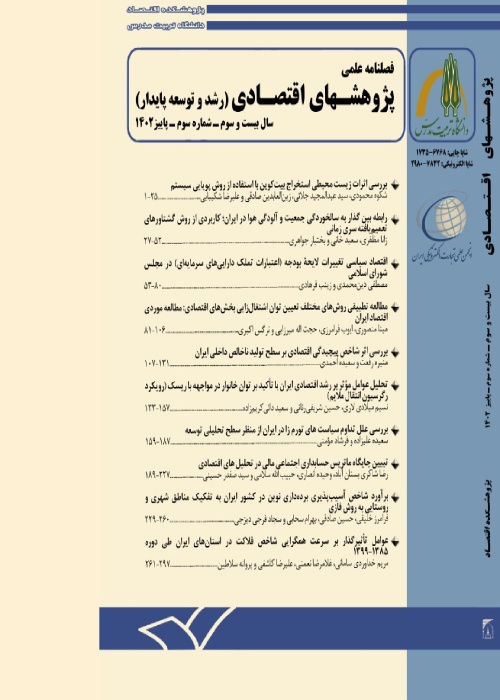The Study of Poverty among Iran's Urban Households in Five Economic Development Plans: 1989-2015
Author(s):
Article Type:
Research/Original Article (دارای رتبه معتبر)
Abstract:
Poverty reduction and households’ welfare growth have become major issues in economic development in the recent years, so that poverty alleviation and individual’s welfare improvement are necessary conditions for economic growth. Evidently, fighting poverty programs need to efficiency in policy-making, proper method of implementation of policies, and identification of dimensions, causes and consequences of poverty. Thus, examining the poverty situation in each society is the first step in planning for fighting poverty and social exclusion. In this study, the poverty line of Iran's urban households is computed by using the theory of relative habit linear expenditure system (RHLES) in a linear expenditure system (LES). Data are extracted from Households Income and Expenditure Survey (HIES) in urban areas for 8 commodity-groups over the period 1989-2015, which five economic, cultural, and social development plans have been implemented. In addition, the poverty intensity is examined in urban areas using indices of poverty measurement. The results of study show that although the poverty line (minimum subsistence expenditure) in Iran's urban households goes up over time, but the intensity and extent of poverty go down. Thus, the government policies for the reduction of relative poverty in urban areas have been successful. According to findings, the minimum subsistence expenditure was 80296387 Rial in real terms (2011=100) in 1989, as the first year of the first 5-year development plan. It reached to 9677574 Rial in 2015 (the last year of the fifth 5-year development plan). In other words, it recorded a growth rate of 0.7 percent, on average, during the five development plans. However, the intensity and extent of poverty have experienced decreasing trends during 1989-2015. In 2015, the indicators of head-count ratio, poverty gap and Foster, Greer and Thorbecke (FGT) reached their minimum levels by 31.08, 10.9 and 4.3, respectively. The results confirm relative improvement in the subsistence level of urban households.
Keywords:
Language:
Persian
Published:
The Economic Reseach, Volume:18 Issue: 3, 2018
Pages:
167 to 192
magiran.com/p1890648
دانلود و مطالعه متن این مقاله با یکی از روشهای زیر امکان پذیر است:
اشتراک شخصی
با عضویت و پرداخت آنلاین حق اشتراک یکساله به مبلغ 1,390,000ريال میتوانید 70 عنوان مطلب دانلود کنید!
اشتراک سازمانی
به کتابخانه دانشگاه یا محل کار خود پیشنهاد کنید تا اشتراک سازمانی این پایگاه را برای دسترسی نامحدود همه کاربران به متن مطالب تهیه نمایند!
توجه!
- حق عضویت دریافتی صرف حمایت از نشریات عضو و نگهداری، تکمیل و توسعه مگیران میشود.
- پرداخت حق اشتراک و دانلود مقالات اجازه بازنشر آن در سایر رسانههای چاپی و دیجیتال را به کاربر نمیدهد.
In order to view content subscription is required
Personal subscription
Subscribe magiran.com for 70 € euros via PayPal and download 70 articles during a year.
Organization subscription
Please contact us to subscribe your university or library for unlimited access!


